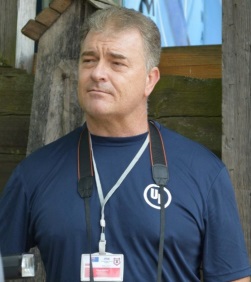
In this series, Fire Engineering Senior Editor Mary Jane Dittmar looks at the things that motivated and inspired instructors to present on their topics at FDIC International 2016. Segments will be posted on a regular basis up to and through the conference, April 18-23.

Shan Raffel
Station Officer
Queensland Fire & Emergency Service
Redland, Queensland, Australia
Dynamic Decision Making and Reading the Fire: CFBT Presentation 3
April 19, 8:00 a.m.-12.00 p.m.
SEE VIDEO
Near misses and line-of-duty deaths (LODDs) involving modern fire phenomena propelled my quest to determine what was causing “routine” fires to escalate into sudden and unexpected flare-ups that were injuring and killing firefighters. My search for this knowledge has taken me to more than 20 countries.
I have been in the fire service since May 1983. My department, which has a tradition of aggressive interior attack, responded to many structural fires. In the early 1990s, I had experienced a number of close calls. Respected senior firefighters could not explain these incidents; their replies to my questions were often vague and sometimes even contradictory.
In February 1993, we lost two firefighters in the line of duty in a fire at a Honda dealership. In many ways, it began as a “routine” fire. The loss of the two firefighters was devastation and perplexing. No one was certain of what led to the sudden and unexpected eruption of the fire that killed our colleagues.
About three and a half year later, two more firefighters were caught in another sudden and unexpected ignition of accumulated smoke in a hallway while conducting search and rescue operations. The official report stated that nothing seemed to be out of the ordinary prior to the flashover. It explained that conditions changed rapidly and it got extremely hot when fighters reached the end of the corridor; a blast (like a rush) was experienced; and the smoke overhead lit up into aggressive flames and projected radiant heat in all directions…”
At this point, I was conducting independent international research into the unique approach developed in Sweden that was beginning to gain acceptance in the United Kingdom (UK) and other parts of the world. I submitted a proposal to study the emerging methods of teaching compartment fire dynamics and techniques to deal with the range of modern fire phenomena. I began a six-week intensive study in the UK and Sweden in July 1997.
Firefighters from many parts of the world have informed me that they successfully used the knowledge and skills they learned in this class. Some say they believe serious injury or worse may have been prevented. Most memorable was an incident involving a firefighter from my own service during the early stages my teaching reading fire in 1998. He immediately told me that the two-day program was a waste of time. By the end of the second day, his attitude improved somewhat, but he was still skeptical. Five weeks after the class, he phoned me to apologize. He explained that he was conducting an aggressive interior attack and while advancing to the room of origin, encountered extreme conditions. Somewhat hesitantly, he said they applied the knowledge and techniques taught in my class. Conditions began to improve and eventually they gained control of the conditions and safely extinguished the fire.

